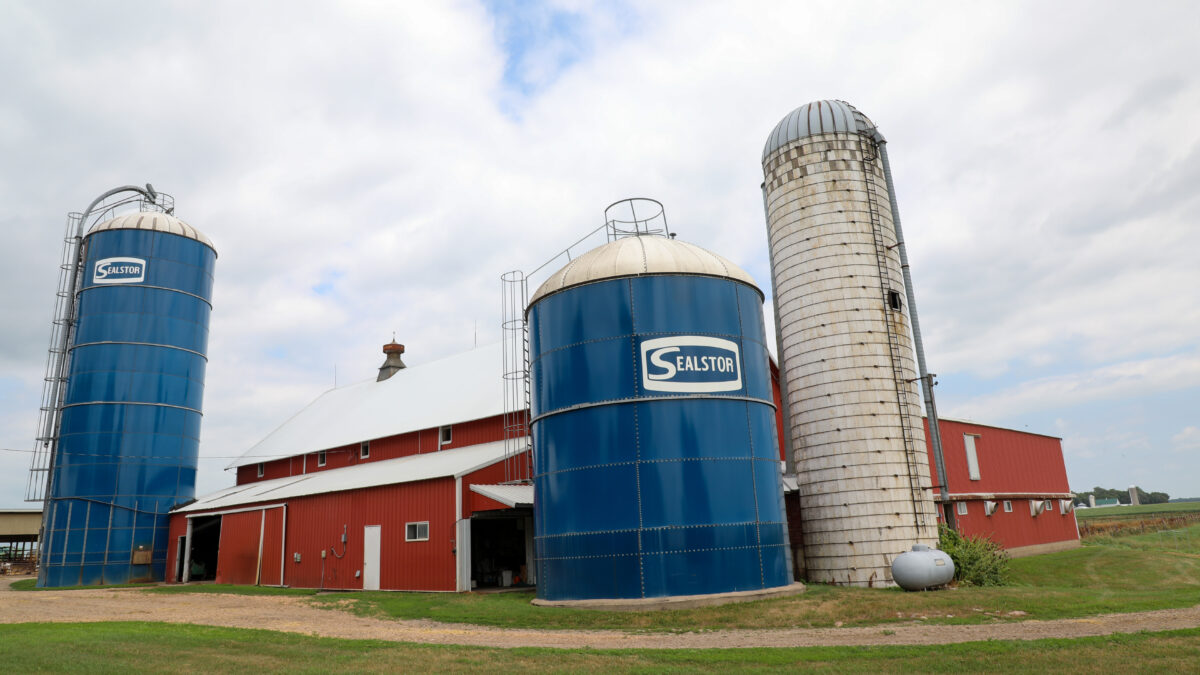From Cow to Carton: Lessons Learned on a Dairy Farm
Teresa Bjork and Caitlyn Lamm

photo credit: Right Eye Digital, Used with Permission
Teresa Bjork and Caitlyn Lamm
Have you ever seen a cow get a pedicure?
It was one of the highlights of our recent trip to Katherine Boelen’s family dairy farm in Poweshiek County, Iowa.
We spent a good 10 minutes watching an expert team from Wisconsin trim hooves to keep the cows’ feet healthy. The cows stayed chill, like it was just another visit to the nail salon. And we even saw a calf being born. Seriously, it was better than anything streaming on YouTube.
As moms who depend on nutrient-dense dairy foods for our kids, it was also fun to see cows being milked and how that milk was piped to a refrigerated tanker truck headed to a processing plant.
While misinformation runs rampant about today’s dairy farms, we got a 360-degree view of what truly happens to get milk from cow to carton.
We got a 360-degree view of what truly happens to get milk from cow to carton.
Here are some takeaways from our tour:
- Dairy cows are treated like professional sport athletes. They receive a highly specialized diet to make sure they get the nutrients they need to keep them healthy. A dairy nutritionist visits the farm once a week to review the cows’ dietary needs.
- All the ingredients that make up a cow’s diet are mixed inside a wagon that acts as a huge KitchenAid. Katherine said it’s necessary to make sure the rations are blended really well, and each ingredient is similar in size, otherwise cows can be like toddlers and only eat the sweets!
- The cows wear digital trackers on their ears to monitor their temperature, movement, rest time and more.
- Each cow gets a “report card,” or a record of stats on how much milk she produces each day, plus other important measurements. (Again, much like a pro baseball player.)
- It was 90 degrees, sunny and sweltering on the day we visited. However, the barns were cool, with huge fans on the ceilings that kept a nice breeze going through the open garage doors on either side of the barn. Sprinklers are turned on during extremely hot days to keep the cows comfortable.
- The family recently upgraded their equipment to speed-cool the milk – from about 100 degrees when it comes out of the cow to 35 degrees in a matter of seconds – to ensure the milk is super fresh when it arrives at the bottling plant. Not only that, but from cow to carton, the milk is never touched by a human hand.
- Water helps speed-cool the milk down through cooling plates. This same water can be for the cows to drink or to clean equipment. The water used in cleaning can later be used in their manure pits. Manure collected from cows acts as a natural fertilizer and is applied according to state guidelines.
- The Boelens grow cover crops, like rye, to feed back to their cows. Cover crops also work to hold soil and nutrients in place when their corn crop isn’t growing.
- Milk is the original local food. It takes fewer than 48 hours to deliver milk from the cow to the grocery store.
- Every load of milk is tested by the USDA to ensure its safety. The family gets the test results emailed back to them immediately that same day.
- The farm gets inspected—a lot—by third parties for food safety. For example, the USDA sends inspectors to the farm several times a year, which is standard practice in dairy farming. Milk is one of the most regulated foods in the U.S.
- If you’re looking to save money, budget-brand milk comes from the same farms as brand-name milk, Katherine says. Each bottle of milk has a label number, which you can look up online to see where the milk comes from. Katherine says she often buys the budget-brand chocolate milk, because her four kids will only drink chocolate milk.
Teresa Bjork is consumer content manager and Caitlyn Lamm is public relations coordinator at Iowa Farm Bureau. The original, full-length version of this column appeared on Iowa Farm Bureau’s Farm Fresh Blog.
Top Issues
VIEW ALL